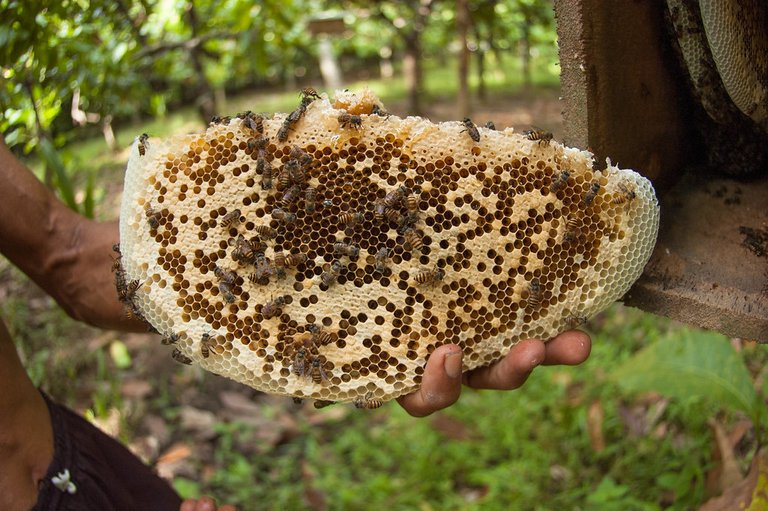From Flower to Honey - The Bee Journey
When you take a scoop of honey to place on your bread or toast, you enjoy its pureness and sweetness. Its soft, golden color and sugary taste are enough to fill one's hunger, but how does honey find its way to our table? One answer we give to the question “What produces honey” is ‘bees,’ but bees didn’t just wake up one day with the task of producing honey; the production of the sweet sugar substance with love started from flowers.
Honey bees wake up intending to look for nectar produced by plants in their flowers to lure pollinators to them. Foraging bee use their tongue to sip nectar and dust pollen around with their body thereby helping the plant to reproduce as it moves from one nectar-producing flower to another. While the bee sips in this nectar, it doesn’t digest it immediately rather, it stores it in a compartment in its body known as the honey stomach. Once the bee holds nectar up to its body weight, it heads back to the hive. Enzymes in the bee’s stomach break down the complex sugar in the nectar to simple sugars like glucose and fructose in other to prevent fermentation and allow for easier digestion of the honey.
The forager bee regurgitates the nectar into the mouth of a worker bee in the hive. The worker bee, adds more enzymes to the nectar to break down the complex sugar in it to simple sugar. To allow for reduced moisture content, the worker bees keep transferring the nectar from one individual to another allowing for evaporation when exposed to air thereby reducing the water content of the nectar from about 80% water to about 17% to 20% water which we see in honey.
Once the nectar thickens, they are deposited into hexagon-shaped cells. They continue to dehydrate the nectar by fanning their wings to create airflow within the hive so the evaporation process is increased and the honey is ripened. The honey at its best is thick, syrupy, and resistant to spoilage. When the honey is made, the bee seals it with wax to keep it safe. The purpose of keeping the honey is for it to be eaten during seasons when nectar is scarce.
To make a pound of honey, the bee will have to visit about 2 million flowers and a single worker bee might be able to produce only about 1/12 of a tablespoon of honey. Raw honey hasn't been pasteurized so it would still contain pollen, enzymes, and bee glue.
Honey has been proven to have antibacterial properties and even modern skincare use it in their products. Honey today is both food, medicine, and sweetness. It is a product of biology, chemistry, geography and small things that become big.
Reference
https://www.sciencedirect.com/topics/agricultural-and-biological-sciences/honey-bee-colonies
https://canr.udel.edu/maarec/honey-bee-biology/the-colony-and-its-organization/
https://www.cprcertified.com/making-honey-from-flowers-a-guide-to-bees
https://honey.com/about-honey/how-honey-is-made
https://www.sciencedirect.com/science/article/pii/S1319562X20304952
https://pmc.ncbi.nlm.nih.gov/articles/PMC3609166/
https://www.intechopen.com/chapters/1159025


Thanks for your contribution to the STEMsocial community. Feel free to join us on discord to get to know the rest of us!
Please consider delegating to the @stemsocial account (85% of the curation rewards are returned).
Thanks for including @stemsocial as a beneficiary of this post and your support for promoting science and education on Hive.
Congratulations @elity-sitio! You have completed the following achievement on the Hive blockchain And have been rewarded with New badge(s)
Your next target is to reach 70000 upvotes.
You can view your badges on your board and compare yourself to others in the Ranking
If you no longer want to receive notifications, reply to this comment with the word
STOP